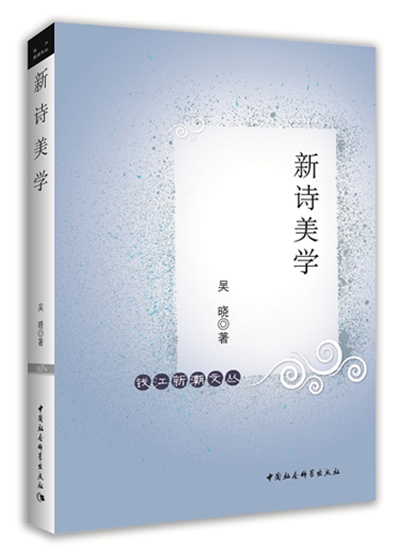How do images shape poetics?

Aesthetics of New Poetry
China has been a country of poetry since ancient times. However, the theoretical construction of Chinese poetics is under-researched. Most works on the poetic image focus on its changes from ancient to modern times, or they confuse the theory of the image in Chinese classical poetry traditions and the school of imagism represented by the American poet Ezra Pound (1885–1972).
Authored by Wu Xiao, a professor from the School of Humanities at Zhejiang University, Aesthetics of New Poetry is an academic monograph on the aesthetic theory of new poetry. As opposed to classical poems, new poetry is free verse in vernacular. Based on the theoretical premise that poetry is a system of image symbols, Wu explores the core issue of “where do poetry and its aesthetics come from and where to go.” He argues that poems are actually a form of expressing the universe itself, and the best realm of poetry lies in the ultimate form of the universe.
The reason why great poems can be passed down through the ages is that the psychological structure of human beings is created of the universe. As a creature by the universe, humanity’s psychological structure corresponds to the forms of the universe in an isomorphic manner. When we read poems that express these forms of the universe, their aesthetic connotations and structures have long been assimilated and accepted by the subconscious in our psychological structure.
The author does not mystify the relationship between man and the universe, but clearly demonstrates its generation and deconstruction within the mysterious realm of poetry. For example, in Wang Wei’s poem “On Mission to the Frontier,” there is such a line, “In boundless desert lonely smoke rises straight; over endless river the sun sinks round.” (trans. Xu Yuanchong). If readers appreciate the wonderful scenery merely through the words “lonely,” “straight,” “endless” and “round,” it may be impossible to interpret the emotions of the poet. But if we try to interpret the poem in the visual forms of the universe—planes, straight lines, curves and circles, the four images of “boundless desert,” “lonely smoke,” “endless river” and “sun sinks round” actually reflect the ultimate existence of the universe. The colorful material properties that are displayed by image reveal the true existence of the universe and vividly express the symbiosis of space and time. The psychological structures of readers resonate strongly with the basic structure of the universe, and the realm of poetry has thus become a “meaningful” cosmic form.
The author summarizes three major types of deep consciousness in human psychological structure: the life consciousness of human existence and development, the historical consciousness of social and cultural environments, and the cosmic consciousness of the natural environment that humans depend on.
Yao Xiaoping is an associate professor from the School of Humanities and Communication at Zhejiang University of Finance and Economics.
Edited by YANG LANLAN

 PRINT
PRINT CLOSE
CLOSE